Tom's Hardware Verdict
Although it takes some careful planning and consideration to build a system in, Lian Li’s PC-O11D Mini is hands-down the most fun chassis of the year.
Pros
- +
Expansive and fun build possibilities
- +
Brushed aluminum is back!
- +
Tons of room for cooling
- +
Reasonably priced
Cons
- -
Vertical GPU bracket is just PCIe 3.0 for now, and isn’t available at launch
- -
Acrylic Shroud around top IO is prone to scuffing
- -
Ugly bottom air filter implementation
- -
Requires careful planning and consideration, especially for custom loops
- -
Not exactly ‘Mini’
Why you can trust Tom's Hardware
Lian Li is finally offering up the baby version of the classic PC-O11 Dynamic, and it’s called… (drumroll please) the PC-O11D Mini. But in making a SFF variant of this chassis, Lian Li hasn’t just squeezed things down to a Mini-ITX format and called it a day. Instead, this chassis isn’t quite a Mini-ITX chassis, as it can be modified to fit ATX motherboards. Nor is it a full ATX chassis, as you do make compromises with that layout, too.
Indeed, the PC-O11D Mini is a bit of an oddball case, built with a highly modular interior that allows you to build anything from crazy Mini-ITX systems with tons of radiators and custom liquid cooling to modest ATX systems that don’t take up too much space. This is nothing like the cases currently on our Best PC Cases list. And in my experience, this modularity makes it one of the more fun cases I’ve had the pleasure of working with this year.
The chassis also doesn’t come with any fans, and as such, it offers the builder an immense amount of creative freedom to build a system to their liking. Because of this weird and wonderful design, we’ll be taking this review in a slightly different direction than the usual lot, as testing this as a Mini-ITX case isn’t really fair as it’s just too big, and our air-cooled ATX case test setup… well, I just can’t see many people building a system like that in this case, so why test it in a way that nobody will use it? That wouldn’t be fair.
Specifications
| Type | Weird and wonderful |
| Motherboard Support | Mini-ITX, Micro-ATX, ATX (modular) |
| Dimensions (HxWxD) | 14.9 x 10.6 x 16.5 inches (380 x 269.5 x 420 mm) |
| Max GPU Length | 15.55 inches (395 mm) |
| CPU Cooler Height | 67 inches (170 mm) |
| Max PSU Size | SFX-L |
| External Bays | ✗ |
| Internal Bays | 2x 3.5-inch, 2x 2.5-inch |
| Expansion Slots | 3, 5, or 7x, optional vertical mount, modular. |
| Front I/O | 2x USB 3.0, USB-C, 3.5 mm Audio/Mic Combo |
| Other | 2x Tempered Glass Panel, Brushed Aluminum |
| Front Fans | None |
| Rear Fans | Up to 1x 120mm |
| Top Fans | Up to 2x 140mm, 3x 120mm |
| Bottom Fans | Up to 2x 140mm, 3x 120mm |
| Side Fans | Up to 2x 120mm, 2x 140mm |
| RGB | No |
| Damping | No |
| Warranty | 1 Year |
Features
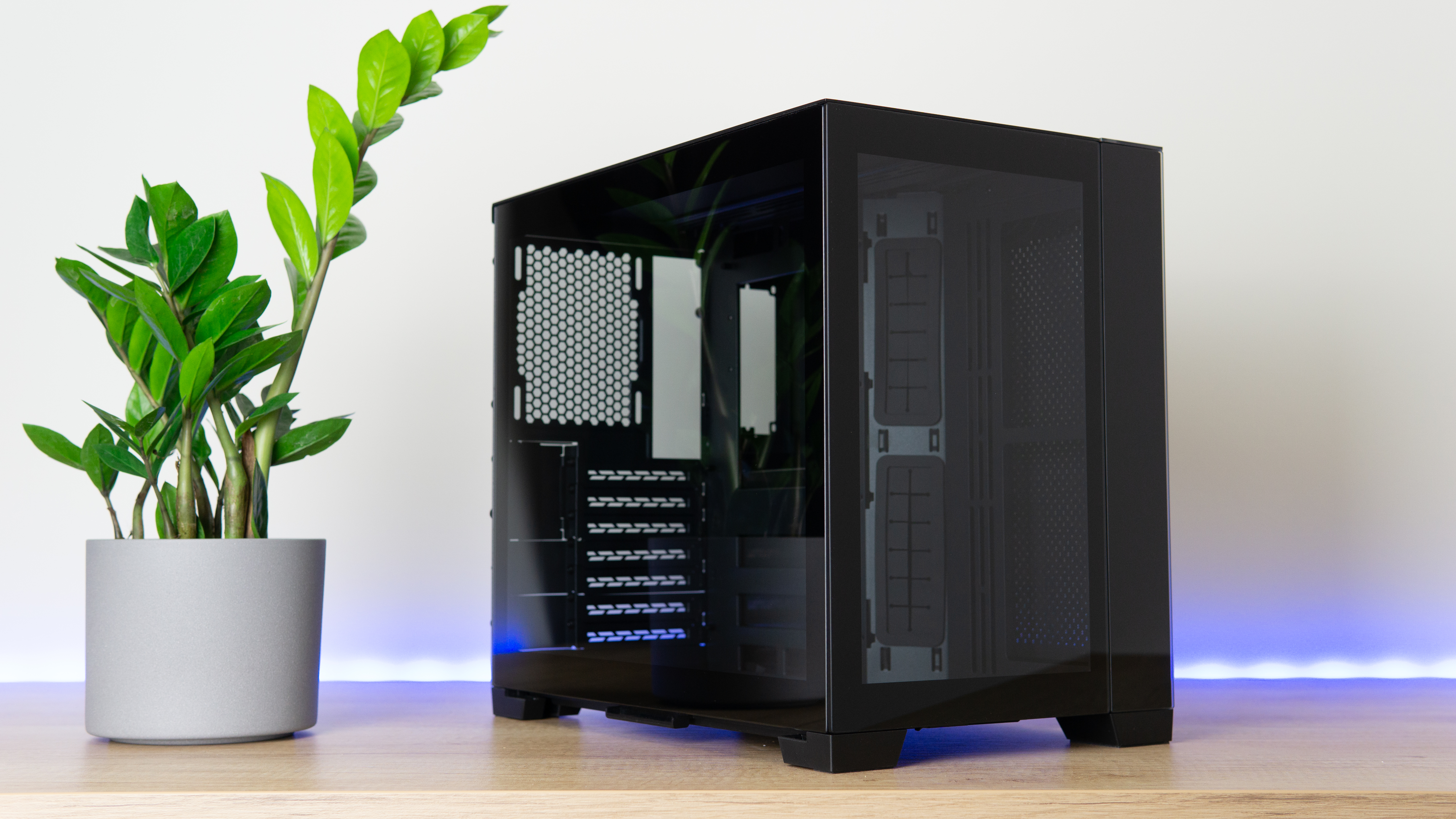

Starting with the outside of the chassis, the PC-O11D Mini changes a few things up from the standard PC-O11D. The IO is moved to the top of the chassis for a clean front. The chassis now has four paws instead of long strips at the front and back, and Lian Li has returned to using brushed aluminum here.

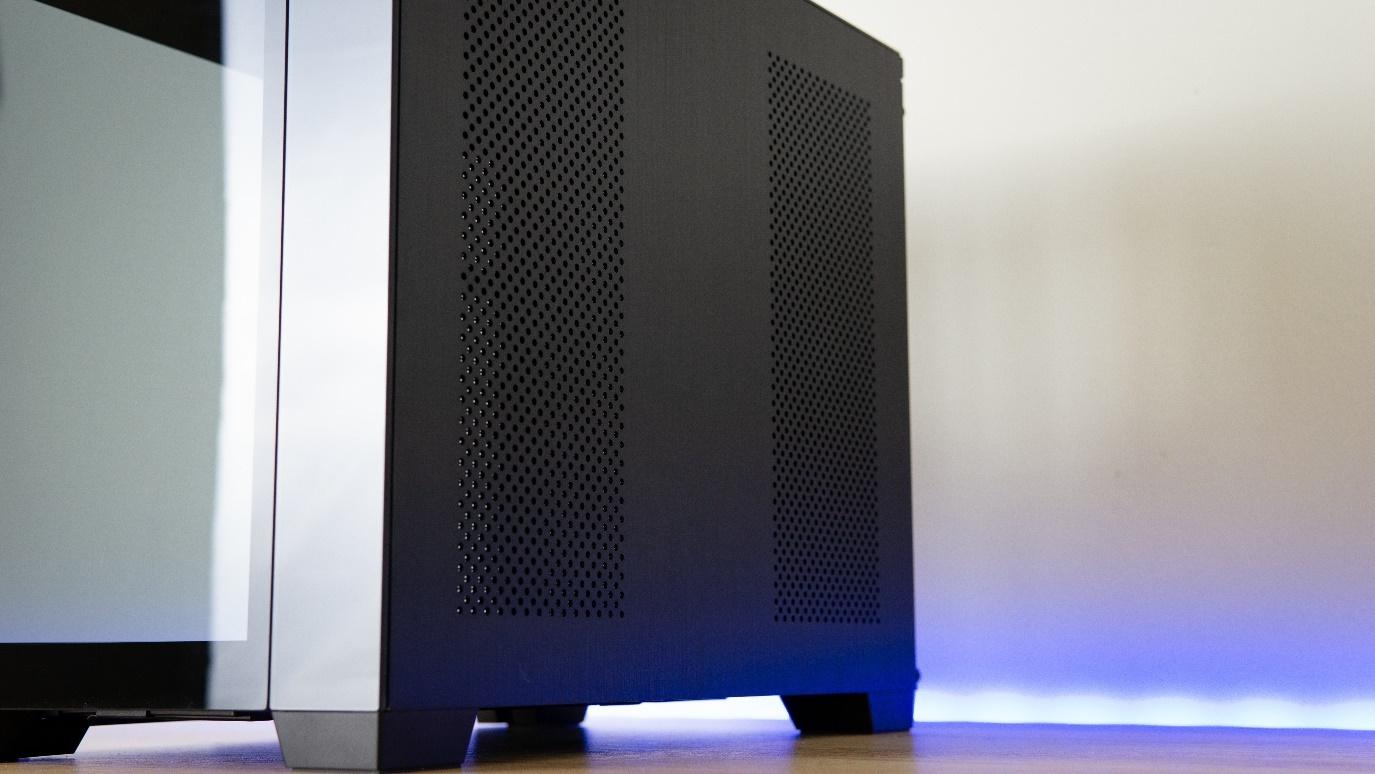

Yes, brushed aluminum. I didn’t think this would happen, so when I unboxed the chassis, I was immediately taken by surprise. Of course, the front and side panels are made of glass, but the right side panel and the top exhaust panel are made of black brushed aluminum, and boy, are they nice. The edges are cleanly cut. The perforation is perfect with sharp corners – none of that droopy mess you get with painted steel. This is quality. You can see it, and you can feel it, which next to the glass really helps elevate the premium feel of the chassis despite its $100 price point.
Of course, we shouldn’t be too surprised by this – Lian Li was once a company that exclusively made premium aluminum cases, until it entered the mainstream space and needed to work with more affordable materials.
But it’s not all good here on the PC-O11D Mini. The front is also good with a glass panel and a glass strip on the right, but next to the gorgeous brushed-aluminum panel at the top is a strip of acrylic around the IO.
Get Tom's Hardware's best news and in-depth reviews, straight to your inbox.
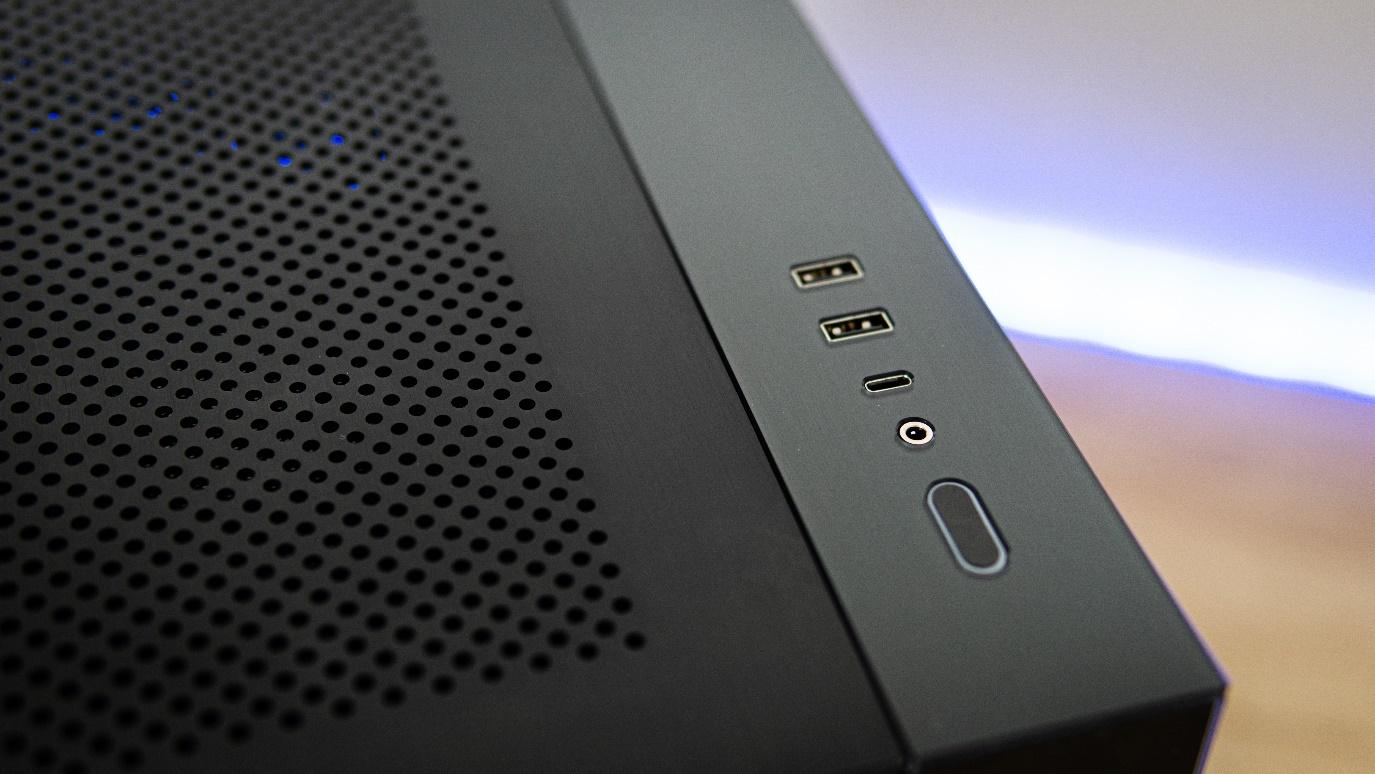
Now don’t get me wrong, I don’t have a problem with acrylic in itself. In fact, those building custom loops are going to be working with plenty of pretty acrylic inside the case – where it’s safe – and that’s the problem. Acrylic scratches easily – very easily, and I have trouble understanding why, when the rest of the chassis is made so beautifully, Lian Li opted for acrylic in the one place where it will constantly be exposed to the sharp edges of USB connectors.
Of course, there’s a simple explanation: It’s far easier to cut out the gaps for the IO, and fresh from the factory, it does look good. It’s also only a $100 case, and there is a brushed aluminum effect going on below it, which looks nice, and the perfect cutouts do look much better than what you get on many cases. Fortunately, it’s only glued on with weak glue, so it’s easy to rip it off and replace with an aftermarket solution – something tells me the community will come up with something on that front.
Otherwise, the IO consists of two USB 3.0 ports, a Type-C port, and a mic/headphone combo jack. It looks nicely minimalistic, but I would have preferred to see the connectivity at the front of the case, as the chassis is too tall to reach the IO without having to get up from my seat. IO at the top of cases is for PCs that you place on the ground, underneath your desk.
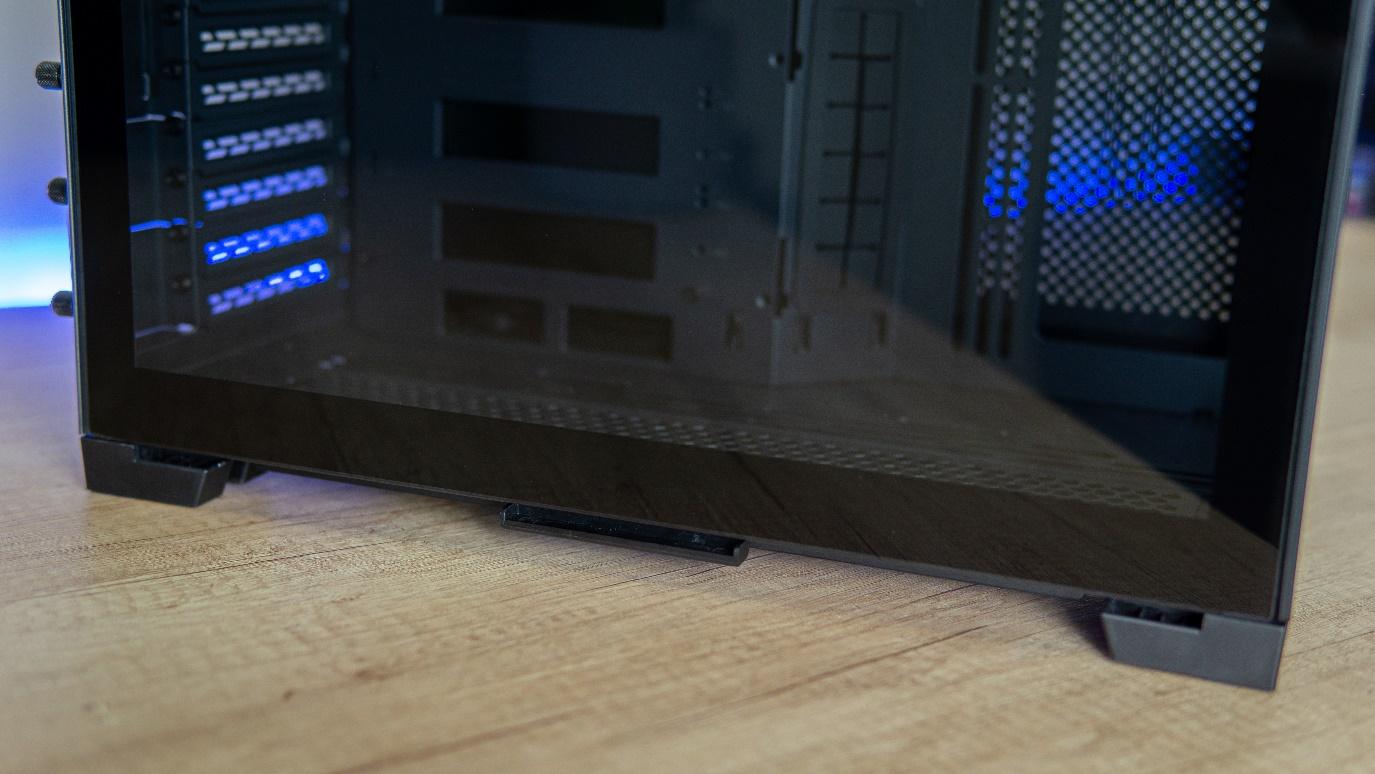

Moving on, another complaint about the exterior of the chassis is the lower air filter. It slides out from the side with a handle, which is practical, but the feet have visible cutouts where it slides into, and the handle on the side isn’t exactly pretty either, with the ugly side of the plastic mold visible from above. Being a case that’s aimed at being pretty, I would have preferred the less-practical magnetic filters, like on the regular PC-O11 Dynamic and the rest of this chassis.

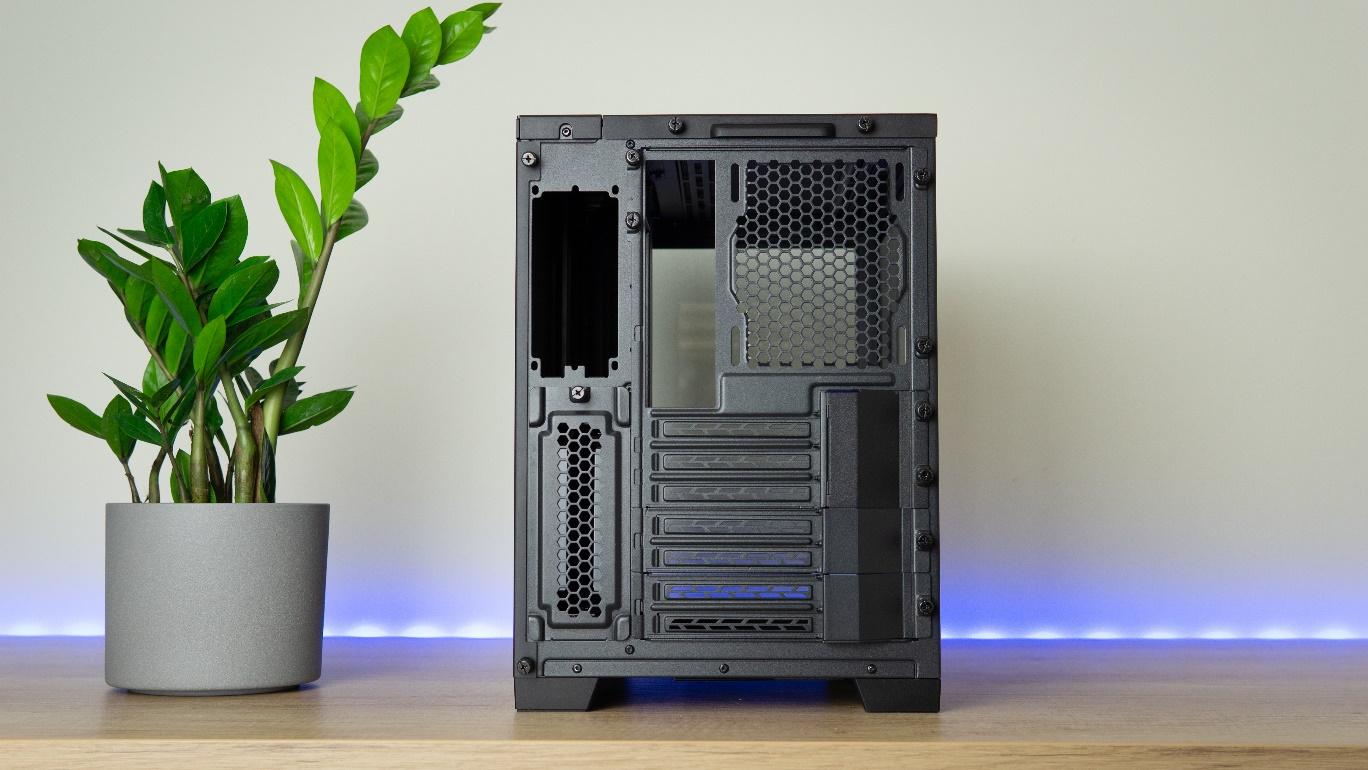

Around the rear of the chassis, things are looking a little unusual, but for good reason. At the top-left is the mount for the SFX power supply. This case won’t fit normal ATX PSUs, in an attempt to keep the width under control. Underneath it there is a latch that opens to reveal two 3.5-inch HDD sleds.
On the right, you find the rear IO area. You’ll notice the weird shrouds over the end of the expansion slots, which attach with a plethora of thumbscrews. The reason for this is simple: You can remove some of the expansion slots, move down the entire motherboard assembly, and place covers over the remaining areas to swap the case for ATX, Micro-ATX, and Mini-ITX layouts, or for vertical GPU mounts. More on this in a bit.
Niels Broekhuijsen is a Contributing Writer for Tom's Hardware US. He reviews cases, water cooling and pc builds.
-
HFirst I love the 011 cases. Built my last pc, a threadripper, with an 011 Dynamic. I just wish Lian Li would truly design these cases to be more flexible and allow an inverted setup with the glass on the right. Another nice plus would be an updated dual chamber design with a mesh front. A really nice touch would be an option to let us choose whether we want the power button and io ports to be on the top or the front.Reply -
Blindfly ReplyLeptir said:I'm really not sure this case qualifies as SFF or even "SFF-ish".
It really isn't, I mean on their own website its listed under mid size cases, its just mini for the O-11 series. I think they make it pretty clear that its an ATX capable case AKA not small -
ajr1775 Reply
It takes an SFX power supply but yeah, nothing that can hold a full size GPU should be labeled SFF.Leptir said:I'm really not sure this case qualifies as SFF or even "SFF-ish". -
Uferizer Reply
This is the preferred way with a front or side mounted AIO. Have you not watched the behemoth Gamer Nexus video on this?ajr1775 said:That intro picture........AIO tubes on the bottom.......NOOOOOOOOOOOOOOOOO
BbGomv195sk:1076View: https://youtu.be/BbGomv195sk?t=1076 -
ajr1775 Reply
Missed that one. Thanks for that. Always under the preconceived notion that the tubes at the top of the radiator should always be higher than the pump itself.Uferizer said:This is the preferred way with a front or side mounted AIO. Have you not watched the behemoth Gamer Nexus video on this?
BbGomv195sk:1076View: https://youtu.be/BbGomv195sk?t=1076 -
Uferizer Reply
Yeah it's a bit finicky, especially in this case where if you're like me and want to go full ATX, you have to mount the rad for the AIO on the side (not enough space on top). If you've got any sort of normal sized GPU, I think even a 3070/80 FE, then having the tubes at the bottom of the AIO is gonna be hard. I guess in this case the solution was to mount the GPU vertically. From what I understood in the Gamer Nexus video though, having the tubes on the top in a side or front mounted orientation is just going to be more noisy, whereas having the whole rad under the pump is detrimental to the lifespan of your AIO. So I may just have to live with the noise and gurgle because it just wont fit otherwise.ajr1775 said:Missed that one. Thanks for that. Always under the preconceived notion that the tubes at the top of the radiator should always be higher than the pump itself.
